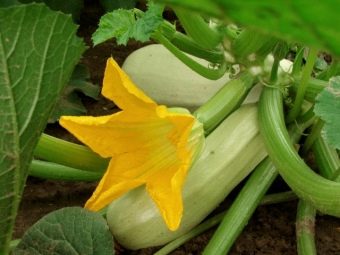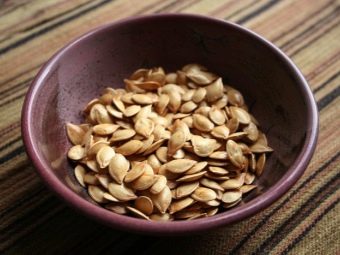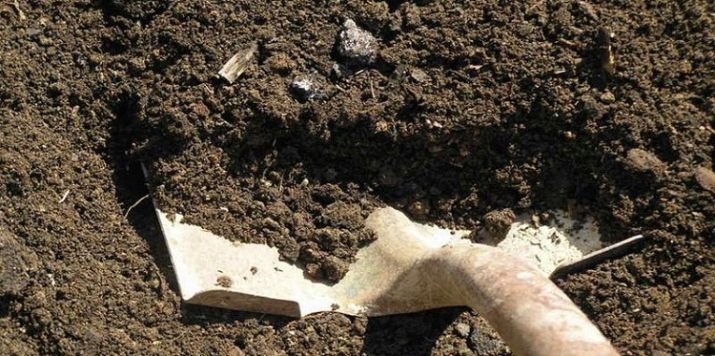Zucchini "Gribovsky 37": characteristic of the species and cultivation

Among the many varieties of pubs "Gribovsky 37" is very popular.Reviews of gardeners say that this white-fruited type of zucchini is completely unpretentious, just take care of it, and it is very resistant to disease. What are the advantages of the variety? All the details are waiting for you in our special material.
Features of the variety
The description of the white-fruited variety "Gribovsky 37" suggests that this zucchini belongs to the type of medium maturation. That is, from the beginning of flowering and until the fruits appear, it takes only one and a half or two months. This variety has long established itself only on the positive side, since it does not require special care and is highly resistant to various diseases. It can easily be grown in open beds, under film or in a greenhouse.
Like many bush zucchini, this variety feels great in many countries around the world and has a high yield. The bush grows strongly branched, its stalks are large and beautifully spread along the ground. This variety is blooming with large yellow flowers of interesting shape in the form of bells. The plant has both female and male flowers.
The fruits of this variety ripen almost simultaneously. The ripe fruit has an oblong flat shape. The color of these zucchini varies from pale green to almost white. Often on the skin of the fruit there are small thin strips or specks. The weight of a ripe fruit can reach a kilogram, and sometimes more. The average length of the fetus comes to eighteen centimeters.
This variety has a very attractive presentation, excellently withstands transportation. The taste of Gribovskiy 37 is very good and can rightly be considered versatile, since these zucchini are ideal for both fresh salads and for preparing other various dishes or preservation. The flesh of these zucchini juicy, medium density, white.
We should also mention that this variety, like many types of zucchini, is thermophilic. The plant tolerates drought well and feels great in sunny, hot weather, as well as at lower temperatures. This variety is considered high-yielding, because more than eight kilograms of selected fruits can be harvested from one square meter.
How to grow?
This variety of the pumpkin family can be grown in an open garden. In order to plant a plant in early spring, the soil for planting should be prepared in the fall. At this time, it will be enough just to dig the earth, but in the spring it should be sated with all the necessary components so that the soil is fertile. In this case, normal peat or humus is perfect.
Since, as mentioned above, this variety is very thermophilic, you need to start growing seedlings.
In that case, if the weather conditions of the region allow, and you want to get the fruits as early as possible, the seedlings should be dealt with at the end of April. If you want to preserve ripe fruits until the cold and prepare some of the harvest for the winter, seedlings should be taken at the end of May.
For future seedlings should prepare a suitable capacity. Best of all, peat pots with a volume of at least 100 ml and a height of 8-10 cm are suitable for this role. It is best to choose a special mixture as the soil.
Immediately before planting, seeds should be soaked without fail. Make it very easy. To begin with, we soak them for twelve hours, using a special compound to stimulate plant growth. After that, the seeds are folded into a wet cloth bag of breathable fabric or gauze and kept there for three days.
Germinated and already prepared seeds are planted in a hole to a depth of five centimeters. Just a week later, the first sprout of our seedlings will appear. At this point, it is very important to take care of the first feeding. You can purchase ready-made product for this, or you can dilute in a liter of warm water half a teaspoonful of superphosphate and urea. Re-feeding should be carried out after ten days.
Remember that the roots of this plant are very fragile, and to prevent the process of decay should be watered no more than twice a week. In this case, the water should be extremely warm. The optimum temperature for irrigation water is 22 ° C. It is important in this case not to overdo it: one hundred milliliters of water will be enough for watering on one sprout.
As soon as at least three leaves appear on the seedlings, it will be ready for planting in open ground. Before planting, the plant should be hardened and only then transplanted. Transplanted seedlings into the prepared soil after the frosts have passed. In each well, you must first make a mixture of one tablespoon of superphosphate and five liters of compost. After planting, the plant should be carefully covered with earth, without affecting the leaves.
It is best to plant the plants in a staggered manner at a distance of fifty centimeters from each other. So during full growth and flowering, they will not obscure each other, and the yield will be high. The plant is best planted on the sunny side of the garden without drafts.
And here is another small secret, thanks to which it will be possible to achieve a high yield. It is good to plant this variety on those beds where carrots, onions or peas used to grow. But if plants from the pumpkin family used to grow on the beds earlier, this may adversely affect the growth and health of this variety.
Care Tips
Subsequent care of zucchini will not be difficult. The main thing is not to forget to water the plant in a timely manner, to rid the beds of weeds, to feed and loosen the soil in time.
As soon as you transplant the seedlings in an open ground to a permanent place for their further growth, after a week you can hold the first loosening. One month after planting, special fertilizer should be applied.
If there are not a lot of insects in your garden, then there may be problems with pollination during the flowering period. To prevent this from happening, experienced gardeners use the following trick: they regularly spray bushes with sugar syrup - this attracts pollinating insects.
Watering plants is best in the evening. Irrigation of plants of this class is produced exclusively at the root, without touching the leaves. Usually on each bush leaves about a liter of water, sometimes more. The amount of water and the frequency of irrigation depend on the type of soil and weather conditions.
Do not too much moisten the soil after the first ovary of the fruit. This can lead to rotting of the roots. Remember that a week before harvesting watering should stop completely.
In order to prevent overgrowth of the fruit, every 7-10 days should inspect the beds. For use in food they remove small fruits that have not reached their maximum size. Their skin is tender, not yet hardened, and the taste is very pleasant. For long-term storage fit stronger and larger fruit with a thick skin. Before storing, zucchini is thoroughly dried, cleaned of dirt, put in wooden boxes, put in sawdust or straw, and cleaned in the cellar.
In the next video, see the technology of growing zucchini, zucchini and squash.



























